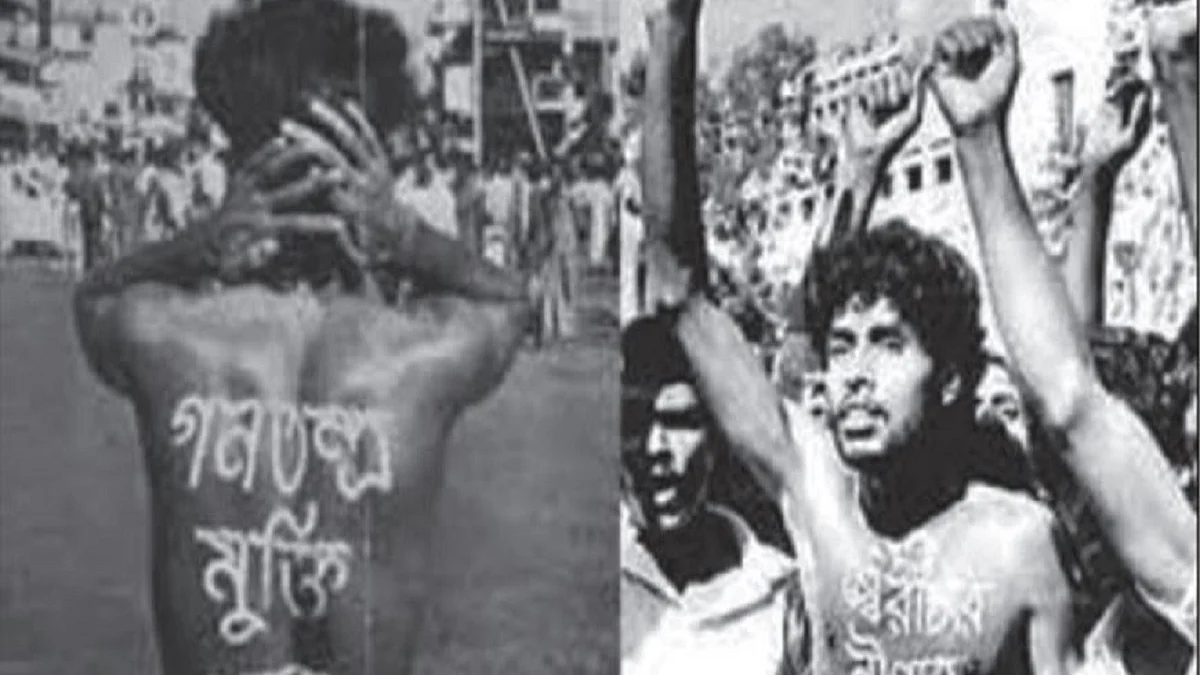A Martyr’s tale: BBC revives the memory of a martyr
An unidentified body and an unsung hero for long, Noor Hossain’s dramatic death has been recalled by BBC in a touching tale

The bright and white enamel paint on his bare chest stood out in the crowd. It was enough of a provocation for one policeman to aim at him. One bullet felled him and a neat, little hole on his chest pierced the message painted on his bare chest. It read, ‘Down with Autocracy’.
The day before he was killed on November 10, 1987, Noor Hossain had met Ikram, a 18-year old painter of signs with a request. He wanted two slogans to be painted on his chest and back. ‘Down with Autocracy’ on his chest and ‘Free Democracy’ on his back.
The next day a massive demonstration was being planned by students in Dhaka, Hossain told Ikram, and he would join the protest against the military dictator General Ershad. Ikram was scared. His brother was General Ershad’s messenger and they lived within the Presidential palace. It was too risky. But Hossain reassured him by saying that hundreds of protesters would have the slogan painted on their body. There was no way it could be traced back to Ikram. The painter relented.
The next day, however, Hossain was the only protestor to stand out with the provocative slogans. He drew enough attention to himself to prompt two photographers, Pavel Rahman and Dinu Alam, to take photographs, Pavel from the back and Alam from the front. Rahman did not realise that there was a slogan on his chest and Alam had no clue that there was one on his back.
In any case, Hossain was killed by what was a clear shot aimed at him and not at the crowd. Luckily Rahman’s photograph of his back got into the next day’s newspaper. It caused a sensation, inspired an entire generation of students who rose up in arms three years later, forcing President Ershad to step down on December 4, 1990.
It took Hossain’s family more than a week to find out what happened and trace his unmarked grave. Both Rahman and Ikram, the photographer and the painter, went into hiding, fearful of the regime. They resurfaced only after Ershad was arrested and put in jail. Years later Ikram, wracked by guilt, went to call on Hossain’s family. Once there, he wept and blamed himself for Hossain’s death. If only he had refused to paint, Hossain might have lived, he wailed.
BBC’s Moazzem Hossain, who met all the protagonists and pieced together the moving story, recalls that Hossain’s father consoled Ikram. He had lost Noor but gained another son in Ikram, he said. Asking him not to feel guilty, he declared that it was because of both Noor and Ikram that the country had regained democracy.
In another twist in the tale, Ershad, after he was released from prison in 1997, called on Hossain’s family and apologized. The former military dictator promised that he would take care of their family as Noor would have done, if he lived. He was true to his words till Noor’s father was invited to speak at a gathering in Dhaka University, where he declared that he would never wish for dictatorship to return to the country.
Ershad apparently was furious and never called the family again. A city square in Dhaka is now named Noor Hossain Square and the young man, who did odd jobs and died protesting against tyranny, is hailed as a martyr.
Follow us on: Facebook, Twitter, Google News, Instagram
Join our official telegram channel (@nationalherald) and stay updated with the latest headlines